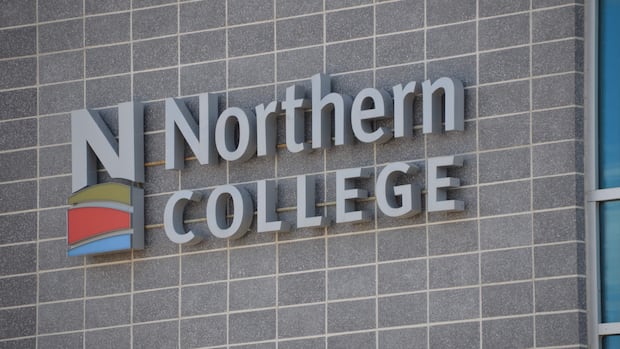Education
Colleges in Northeastern Ontario Face New Study Permit Cuts

Colleges and universities in northeastern Ontario are grappling with significant challenges as the federal government imposes stricter limits on international study permits. Starting in 2026, the number of new study permits will be capped at 150,000 annually, sharply down from 305,900 in the current year. This reduction follows a trend that began in 2024, when the government first introduced limits, leading many institutions into financial difficulties.
The decision to freeze tuition fees for Canadian students since 2019 has exacerbated the situation, leaving colleges and universities increasingly reliant on international students, who pay significantly higher tuition rates. Mitch Dumas, president of Northern College in Timmins, reported a startling 50 percent drop in student enrollment compared to last year. He expressed his dismay upon learning about the new federal budget, stating, “I was expecting a decline, but not such a significant decline of reducing the allocation again by 50 percent. It is very excessive.”
Facing these constraints, Northern College has suspended 12 programs and seen a wave of early retirements among full-time faculty to manage costs. Despite these setbacks, Dumas remains committed to international recruitment, noting a recent trip by a recruiter to the Philippines. He acknowledged that the series of recent changes has negatively impacted the college’s reputation, making it more difficult to attract new students.
Cambrian College in Sudbury also faces tough decisions, announcing the suspension of an additional six programs on top of ten that were already halted last spring. Dan Lessard, the college’s communications manager, emphasized that the reduction in international students complicates an already challenging landscape. He noted the government’s control over which programs are eligible for post-graduate work permits and the allocation of study permits, making it unclear how the changes will affect recruitment.
Despite the challenges, Cambrian College plans to continue targeting potential international students who may not view a Canadian education solely as a pathway to immigration. Lessard mentioned that while the college anticipates deficits, it has reserve funds that might help navigate this difficult period.
At Algoma University in Sault Ste. Marie, a spokesperson described the new cap as a “significant headwind” for all post-secondary institutions. Nevertheless, the university plans to resume first-year admissions in May and September 2026 for five programs, including music, which did not accept new students this fall.
Sault College spokesperson Stephanie Pagnucco acknowledged the challenges posed by the reduced quota but expressed optimism for a 17 percent increase in Canadian student enrollment next year. As colleges work to adapt, faculty associations are calling on the provincial government to reconsider the domestic tuition freeze and address what they describe as chronic underfunding.
Neil Shyminsky, president of the faculty union at Cambrian College, expressed skepticism about the likelihood of support from the current provincial government. Similarly, Neal McNair, the president of OPSEU local 653 representing full-time faculty at Northern College, noted that the latest reductions may not significantly impact revenue, as international applications have already plummeted. He stated, “We continue to believe that the current crisis in the college system is a direct result of the chronic underfunding that is only getting worse, coupled with a tuition freeze for the past seven years.”
In response to the ongoing financial strain, the Ontario government recently increased funding to support over 20,000 spaces in science, technology, engineering, and mathematics (STEM) disciplines to meet the growing demand for skilled workers. Additionally, the government expanded teacher education by 2,600 spaces. Despite these measures, the Council of Ontario Universities has indicated that universities still receive the lowest per-student funding in the country, and Colleges Ontario has emphasized that more work is needed to address the funding gaps facing these institutions.
-

 Science3 months ago
Science3 months agoToyoake City Proposes Daily Two-Hour Smartphone Use Limit
-

 Top Stories3 months ago
Top Stories3 months agoPedestrian Fatally Injured in Esquimalt Collision on August 14
-

 Health3 months ago
Health3 months agoB.C. Review Reveals Urgent Need for Rare-Disease Drug Reforms
-

 Technology3 months ago
Technology3 months agoDark Adventure Game “Bye Sweet Carole” Set for October Release
-

 World3 months ago
World3 months agoJimmy Lai’s Defense Challenges Charges Under National Security Law
-

 Lifestyle3 months ago
Lifestyle3 months agoVictoria’s Pop-Up Shop Shines Light on B.C.’s Wolf Cull
-

 Technology3 months ago
Technology3 months agoKonami Revives Iconic Metal Gear Solid Delta Ahead of Release
-

 Technology3 months ago
Technology3 months agoApple Expands Self-Service Repair Program to Canada
-

 Technology3 months ago
Technology3 months agoSnapmaker U1 Color 3D Printer Redefines Speed and Sustainability
-

 Technology3 months ago
Technology3 months agoAION Folding Knife: Redefining EDC Design with Premium Materials
-

 Business3 months ago
Business3 months agoGordon Murray Automotive Unveils S1 LM and Le Mans GTR at Monterey
-

 Technology3 months ago
Technology3 months agoSolve Today’s Wordle Challenge: Hints and Answer for August 19









